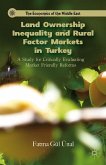Schade – dieser Artikel ist leider ausverkauft. Sobald wir wissen, ob und wann der Artikel wieder verfügbar ist, informieren wir Sie an dieser Stelle.
- Gebundenes Buch
- Merkliste
- Auf die Merkliste
- Bewerten Bewerten
- Teilen
- Produkt teilen
- Produkterinnerung
- Produkterinnerung
This Second Edition arms real estate professionals with a comprehensive approach to the economic factors that both define and affect modern urban areas. The text considers the economics of cities as a whole, instead of separating them. Emphasis is placed on economic theory and empirical studies that are based in economic theory. The book also explores the policy lessons that can be drawn from the use of economics to understand urban areas. Real estate professionals will find new coverage of urban areas around the world to provide a global perspective.
Andere Kunden interessierten sich auch für
![Economics, Real Estate and the Supply of Land Economics, Real Estate and the Supply of Land]() Alan W. EvansEconomics, Real Estate and the Supply of Land164,99 €
Alan W. EvansEconomics, Real Estate and the Supply of Land164,99 €![A Companion to Urban Economics A Companion to Urban Economics]() Richard Arnott / Daniel McmillenA Companion to Urban Economics244,99 €
Richard Arnott / Daniel McmillenA Companion to Urban Economics244,99 €![Readings in Urban Economics Readings in Urban Economics]() Readings in Urban Economics175,99 €
Readings in Urban Economics175,99 €![Asia's Financial Crisis and the Role of Real Estate Asia's Financial Crisis and the Role of Real Estate]() Koichi MeraAsia's Financial Crisis and the Role of Real Estate172,99 €
Koichi MeraAsia's Financial Crisis and the Role of Real Estate172,99 €![Practical Real Estate Methods, for Broker, Operator & Owner [microform]: Thirty Experts on How to Buy, Sell, Lease, Manage, Appraise, Improve and Fina Practical Real Estate Methods, for Broker, Operator & Owner [microform]: Thirty Experts on How to Buy, Sell, Lease, Manage, Appraise, Improve and Fina]() AnonymousPractical Real Estate Methods, for Broker, Operator & Owner [microform]: Thirty Experts on How to Buy, Sell, Lease, Manage, Appraise, Improve and Fina39,99 €
AnonymousPractical Real Estate Methods, for Broker, Operator & Owner [microform]: Thirty Experts on How to Buy, Sell, Lease, Manage, Appraise, Improve and Fina39,99 €![Land Ownership Inequality and Rural Factor Markets in Turkey Land Ownership Inequality and Rural Factor Markets in Turkey]() F. ÜnalLand Ownership Inequality and Rural Factor Markets in Turkey53,99 €
F. ÜnalLand Ownership Inequality and Rural Factor Markets in Turkey53,99 €![Gentrification Trends in the United States Gentrification Trends in the United States]() Richard MartinGentrification Trends in the United States114,99 €
Richard MartinGentrification Trends in the United States114,99 €-
-
-
This Second Edition arms real estate professionals with a comprehensive approach to the economic factors that both define and affect modern urban areas. The text considers the economics of cities as a whole, instead of separating them. Emphasis is placed on economic theory and empirical studies that are based in economic theory. The book also explores the policy lessons that can be drawn from the use of economics to understand urban areas. Real estate professionals will find new coverage of urban areas around the world to provide a global perspective.
Produktdetails
- Produktdetails
- Verlag: Wiley
- 2nd edition
- Seitenzahl: 560
- Erscheinungstermin: 29. März 2010
- Englisch
- Abmessung: 262mm x 212mm x 24mm
- Gewicht: 1051g
- ISBN-13: 9780470591482
- ISBN-10: 047059148X
- Artikelnr.: 28176192
- Herstellerkennzeichnung
- Libri GmbH
- Europaallee 1
- 36244 Bad Hersfeld
- gpsr@libri.de
- Verlag: Wiley
- 2nd edition
- Seitenzahl: 560
- Erscheinungstermin: 29. März 2010
- Englisch
- Abmessung: 262mm x 212mm x 24mm
- Gewicht: 1051g
- ISBN-13: 9780470591482
- ISBN-10: 047059148X
- Artikelnr.: 28176192
- Herstellerkennzeichnung
- Libri GmbH
- Europaallee 1
- 36244 Bad Hersfeld
- gpsr@libri.de
John F. McDonald is currently at Roosevelt University, Chicago, as the Gerald W. Fogelson Distinguished Chair in R.E. John McDonald was Emeritus Professor of Economics and Finance at the University of Illinois at Chicago. He holds a Ph.D. in Economics from Yale University. At UIC he has served as Professor of Economics and Finance, Founding Director of the Center for Urban Real Estate, Senior Associate Dean for Academic Affairs and Research, and Interim Dean of the College of Business Administration. Other positions held include Research Director at NCI Research, and Adjunct Professor of Economics in the Graduate School of Business, University of Chicago. Well known for his research in urban economics and real estate, he is listed in Who's Who in Economics and is author of seven books. He currently serves as editor of the Journal of Real Estate Literature. Daniel P. McMillen is a professor of economics at the University of Illinois at Urbana-Champaign. He has held an appointment at IGPA since 2002. His research interests are urban economics, real estate, and applied econometrics. He is editor of the journal Regional and Urban Economics, and has served on the editorial boards of five other journals. In 1998 and 1999 he served as the chair of the Department of Economics at Tulane University. In 1998, he was a research fellow for the Center for Urban Real Estate and Land Economics at the University of British Columbia. He received his Ph.D. from Northwestern University in 1987.
Part I: Economics and Urban Areas.
Chapter 1. Introduction to Urban Economics.
Chapter 2. Schools of Thought in Urban Economics.
Chapter 3. Location Decisions, Agglomeration Economies, and the Origins of
Cities.
Chapter 4. The Economic Functions of Cities.
Part II: Location Patterns in Urban Areas.
Chapter 5. Introduction to Urban Location Patterns: Static Analysis.
Chapter 6. Using the Monocentric City Model.
Chapter 7. Empirical Testing of the Moncentric City Model.
Part III: Urban Housing and Real Estate.
Chapter 8. Housing in Urban Areas.
Chapter 9. Housing Policy in the United States.
Chapter 10. Real Estate Law and Institutions.
Chapter 11. Real Estate Markets.
Chapter 12. Real Estate Development and Investment.
Part IV: Government in Urban Areas.
Chapter 13. The Public Sector in Urban Areas.
Chapter 14. Urban Transportation.
Part V: Urban Social Problems.
Chapter 15. An Overview of Urban Social Problems.
Chapter 16. Urban Poverty and Its Spatial Concentration.
Chapter 17. Crime in Urban Areas.
Chapter 18. Education, Labor Markets, and Migration.
Part VI: Urban Growth.
Chapter 19. Models of Metropolitan Economic Growth.
Chapter 20. Agglomeration Economies, Technical Change, and Urban Growth.
Chapter 21. Economic Development Policies for Urban Areas.
Appendix: A Review of Some Mathematics and Microeconomic Theory.
Answers to Selected Exercises.
Index.
Chapter 1. Introduction to Urban Economics.
Chapter 2. Schools of Thought in Urban Economics.
Chapter 3. Location Decisions, Agglomeration Economies, and the Origins of
Cities.
Chapter 4. The Economic Functions of Cities.
Part II: Location Patterns in Urban Areas.
Chapter 5. Introduction to Urban Location Patterns: Static Analysis.
Chapter 6. Using the Monocentric City Model.
Chapter 7. Empirical Testing of the Moncentric City Model.
Part III: Urban Housing and Real Estate.
Chapter 8. Housing in Urban Areas.
Chapter 9. Housing Policy in the United States.
Chapter 10. Real Estate Law and Institutions.
Chapter 11. Real Estate Markets.
Chapter 12. Real Estate Development and Investment.
Part IV: Government in Urban Areas.
Chapter 13. The Public Sector in Urban Areas.
Chapter 14. Urban Transportation.
Part V: Urban Social Problems.
Chapter 15. An Overview of Urban Social Problems.
Chapter 16. Urban Poverty and Its Spatial Concentration.
Chapter 17. Crime in Urban Areas.
Chapter 18. Education, Labor Markets, and Migration.
Part VI: Urban Growth.
Chapter 19. Models of Metropolitan Economic Growth.
Chapter 20. Agglomeration Economies, Technical Change, and Urban Growth.
Chapter 21. Economic Development Policies for Urban Areas.
Appendix: A Review of Some Mathematics and Microeconomic Theory.
Answers to Selected Exercises.
Index.
Part I: Economics and Urban Areas.
Chapter 1. Introduction to Urban Economics.
Chapter 2. Schools of Thought in Urban Economics.
Chapter 3. Location Decisions, Agglomeration Economies, and the Origins of
Cities.
Chapter 4. The Economic Functions of Cities.
Part II: Location Patterns in Urban Areas.
Chapter 5. Introduction to Urban Location Patterns: Static Analysis.
Chapter 6. Using the Monocentric City Model.
Chapter 7. Empirical Testing of the Moncentric City Model.
Part III: Urban Housing and Real Estate.
Chapter 8. Housing in Urban Areas.
Chapter 9. Housing Policy in the United States.
Chapter 10. Real Estate Law and Institutions.
Chapter 11. Real Estate Markets.
Chapter 12. Real Estate Development and Investment.
Part IV: Government in Urban Areas.
Chapter 13. The Public Sector in Urban Areas.
Chapter 14. Urban Transportation.
Part V: Urban Social Problems.
Chapter 15. An Overview of Urban Social Problems.
Chapter 16. Urban Poverty and Its Spatial Concentration.
Chapter 17. Crime in Urban Areas.
Chapter 18. Education, Labor Markets, and Migration.
Part VI: Urban Growth.
Chapter 19. Models of Metropolitan Economic Growth.
Chapter 20. Agglomeration Economies, Technical Change, and Urban Growth.
Chapter 21. Economic Development Policies for Urban Areas.
Appendix: A Review of Some Mathematics and Microeconomic Theory.
Answers to Selected Exercises.
Index.
Chapter 1. Introduction to Urban Economics.
Chapter 2. Schools of Thought in Urban Economics.
Chapter 3. Location Decisions, Agglomeration Economies, and the Origins of
Cities.
Chapter 4. The Economic Functions of Cities.
Part II: Location Patterns in Urban Areas.
Chapter 5. Introduction to Urban Location Patterns: Static Analysis.
Chapter 6. Using the Monocentric City Model.
Chapter 7. Empirical Testing of the Moncentric City Model.
Part III: Urban Housing and Real Estate.
Chapter 8. Housing in Urban Areas.
Chapter 9. Housing Policy in the United States.
Chapter 10. Real Estate Law and Institutions.
Chapter 11. Real Estate Markets.
Chapter 12. Real Estate Development and Investment.
Part IV: Government in Urban Areas.
Chapter 13. The Public Sector in Urban Areas.
Chapter 14. Urban Transportation.
Part V: Urban Social Problems.
Chapter 15. An Overview of Urban Social Problems.
Chapter 16. Urban Poverty and Its Spatial Concentration.
Chapter 17. Crime in Urban Areas.
Chapter 18. Education, Labor Markets, and Migration.
Part VI: Urban Growth.
Chapter 19. Models of Metropolitan Economic Growth.
Chapter 20. Agglomeration Economies, Technical Change, and Urban Growth.
Chapter 21. Economic Development Policies for Urban Areas.
Appendix: A Review of Some Mathematics and Microeconomic Theory.
Answers to Selected Exercises.
Index.

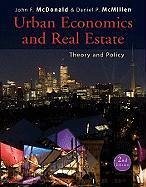

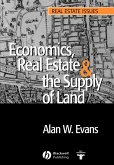
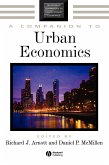
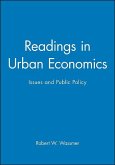

![Practical Real Estate Methods, for Broker, Operator & Owner [microform]: Thirty Experts on How to Buy, Sell, Lease, Manage, Appraise, Improve and Fina Practical Real Estate Methods, for Broker, Operator & Owner [microform]: Thirty Experts on How to Buy, Sell, Lease, Manage, Appraise, Improve and Fina](https://bilder.buecher.de/produkte/65/65510/65510183m.jpg)
